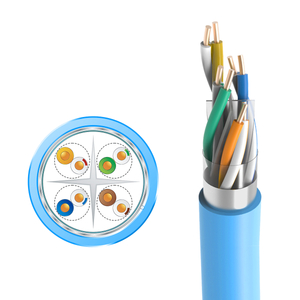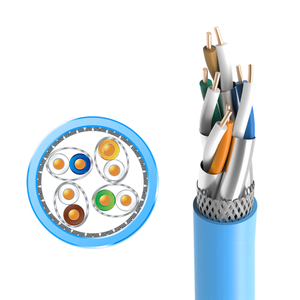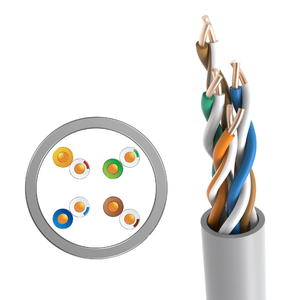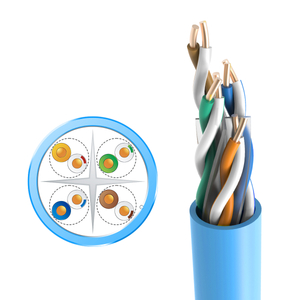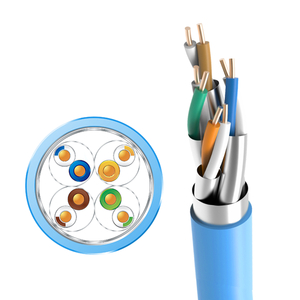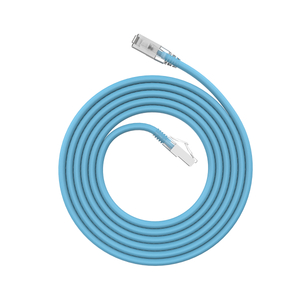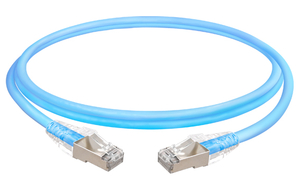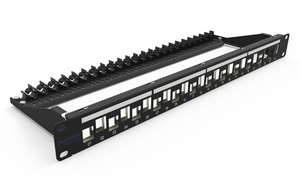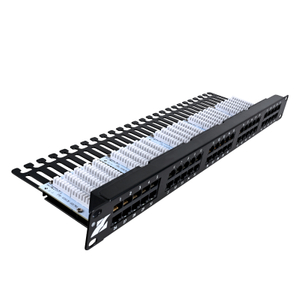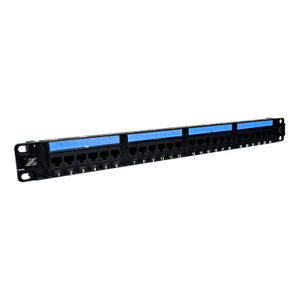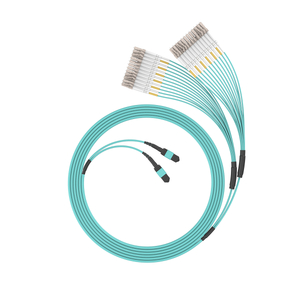In our daily life and work, the widespread use of electricity and networks has brought great convenience. At the same time, the flame retardant performance of electrical and network facilities plays a vital role in reducing fire hazards and losses.
Once a fire occurs, the cable is likely to become a channel for the spread of fire. Therefore, the safety of data cables, especially their flame retardant performance, is crucial. Next, let us explore the flame retardant requirements of data cables and several common data cable combustion tests.
Flame Retardant Requirements for Data Cables
The flame retardant requirements of data cables usually include the following aspects:
Limiting the flame spread speed: Under certain test conditions, the flame spread speed of the cable when it burns should be within the specified range to reduce the possibility of fire spread.
Low smoke and halogen-free: less smoke and harmful gases are produced during combustion, reducing the harm to personnel life safety and the environment.
Self-extinguishing: After the blowtorch flame is extinguished, the cable can extinguish itself to avoid the loss of life and property caused by the spread of fire.
Maintaining certain electrical properties: During and after the combustion process, the basic electrical transmission performance can still be maintained to ensure that communication or power transmission is not interrupted.
Single Cable’s Flame Vertical Spread Test
The single cable flame vertical spread test is one of the commonly used combustion tests for data cables, mainly used to evaluate the ability of a single data cable to prevent the flame from spreading in the vertical direction.
The test principle is to place a single cable vertically, expose it to specific flame conditions, and observe the burning behavior. The purpose is to evaluate the flame retardant properties of the cable itself and determine whether it can effectively prevent the vertical spread of flames in the early stage of a fire to reduce the risk of fire spread.
When conducting this test in accordance with GB/T 18380.11-2008, it is necessary to prepare a layer of continuous horizontal cotton (laying distance of about 75mm to 100mm), a blowtorch for precise flame control, a mold with a length of 40mm for simulating blue inner flames, a gauge for measuring the flame height, and a combustion device that meets the GB/T 18380.11-2008 standard. At the same time, there are strict regulations on the test conditions, such as flame height (blue inner flame height is 40mm±2mm, total flame length height is 125mm±10mm) and burning time.
The relevant test requirements stipulate that the test results of the three samples are qualified if they meet the following conditions at the same time:
a. After any combustion stops, the self-ignition time does not exceed 60s.
b. During and after the test, the area of the indicator flag that is burned or charred is less than 25% (the soot or brown scorch marks that can be wiped off with cloth or fingers are ignored).
c. During and after the test, the cotton laid on the bottom is not ignited by the burning dripping (carbonization without flame is ignored).
The test results are of great significance for judging the quality and fire resistance of cables. They can be applied to simple wiring environments such as family homes, providing a reference for you to choose the right home data cable.
Flame Spread Test of Vertically Installed Bundled Cables
The vertical flame spread test of vertically installed bundled cables is a combustion test for multiple data cables, focusing on the flame retardancy when multiple cables are gathered. The principle is to simulate the scene of bundling and installing multiple cables in actual wiring, and observe the speed and degree of flame propagation in the cable bundle by applying flames. This test is designed to detect the flame retardant properties of wires and cables, evaluate their risk of propagation in fire, determine the speed and extent of flame spread when multiple cables are gathered, and detect the ability of cables to resist flames and prevent the spread of fire when arranged in bundles.
The bundled combustion test requires complex equipment to fix and arrange multiple cables, and has strict requirements on the number and arrangement of cables. The test steps are complicated, including careful arrangement of cable bundles, ignition of flames, and continuous observation of flame propagation. The test results provide a reference for fire prevention planning in specific places such as data centers, high-rise buildings, and large commercial buildings, and help design a reasonable flame-retardant wiring system.
Other Types of Combustion Tests
In order to more comprehensively evaluate the performance of data cables, in addition to the two common combustion tests mentioned above, other related tests include: horizontal combustion test, smoke density test, halogen acid gas content determination test, fire resistance test and oxygen index test.
The horizontal combustion test focuses on evaluating the combustion characteristics of cables in the horizontal direction, including combustion speed and combustion distance. This is of great significance for understanding the fire propagation risk of cables in horizontal wiring and is suitable for some specific wiring scenarios.
The smoke density test is designed to determine the density of smoke generated when the cable burns. Smoke density test is of great significance for fire risk assessment and building fire protection design. Through smoke density test, we can understand the density of smoke generated by cable combustion. Smoke density test can help evaluate the severity and development trend of fire, and provide important reference for fire prevention and fire fighting. In addition, in the design and planning of buildings, understanding the smoke density characteristics of cables can provide a basis for the design of ventilation systems, fire partitions, etc., to ensure that the smoke in the building can be effectively controlled when a fire occurs.
The halogen acid gas content determination test focuses on the halogen acid gas content released when the cable burns. Such gases are corrosive and toxic, and may cause damage to personnel health and equipment facilities. Through this test, the harmfulness of cable combustion products can be determined, so as to select more environmentally friendly and safe cable products.
The fire resistance test examines the ability of the cable to maintain normal operation under high temperature flames for a certain period of time. This is of great guiding role in the selection of data cables used in key systems that need to continue to operate in the event of a fire, such as fire fighting equipment and emergency communication systems.
The oxygen index test characterizes the combustion performance of the cable by measuring the minimum oxygen concentration required to maintain cable combustion. Generally speaking, for data cables, the higher the oxygen index, the harder it is to burn, and the better the flame retardant performance.
In summary, various combustion tests provide a comprehensive and scientific method for evaluating the fire performance of data cables. Through these tests, we can better understand the performance of data cables in fires, select appropriate cable products, and formulate effective fire prevention measures to ensure the safety of life and property and the reliability of information transmission. With the continuous advancement of technology and the increasing requirements for flame retardancy, combustion tests will continue to develop and improve, providing stronger support for the healthy development of the data cable industry.
About Zhaolong Interconnect and Zhaolong’s Combustion Laboratory
Zhaolong Interconnect, founded in 1993, is a high-tech enterprise that is specialized in the manufacture, design and sales of data cables, special cables and connection products. It is a full member of the China Communications Standards Association and a drafting unit of the national standard for data cables in China. It is one of the few companies in the industry that can achieve 400G/800G connection solutions based on all processes. In the 30 years since the company was founded, it has worked silently, accumulated little by little, and moved forward step by step. Core technology and product development keep up with the changes in Ethernet technology. Products are exported to more than 100 countries and regions around the world, and are widely used in various fields such as 5G communications, cloud computing, data centers, smart cities, industrial automation, Internet of Vehicles, smart homes, special applications (medical, wind energy, marine, locomotives, photovoltaics, nuclear power, aerospace), etc.
As a laboratory accredited by CNAS, Zhaolong R&D Laboratory (Testing Center) undertakes new product development testing and product quality testing tasks. It has a variety of testing capabilities such as material properties, mechanical properties, environmental properties, transmission performance, combustion performance (including B1 level), system comprehensive performance, and has the ability to test copper cable systems and components as well as optical cable systems and optical devices. Zhaolong Interconnect R&D Laboratory (Testing Center) always pays attention to the latest technical trends in the industry and the updates of international and domestic industry standards. It can establish the testing capabilities of related experiments according to the latest hot technologies and standard requirements. Strictly follow the policy of "fair behavior, scientific methods, adherence to standards, and accurate measurements" to ensure compliance with the test process and accurate results. All test data are analyzed and demonstrated through rigorous scientific methodology to provide data support for new product development and product quality assurance.
 English
English
 简体中文
简体中文